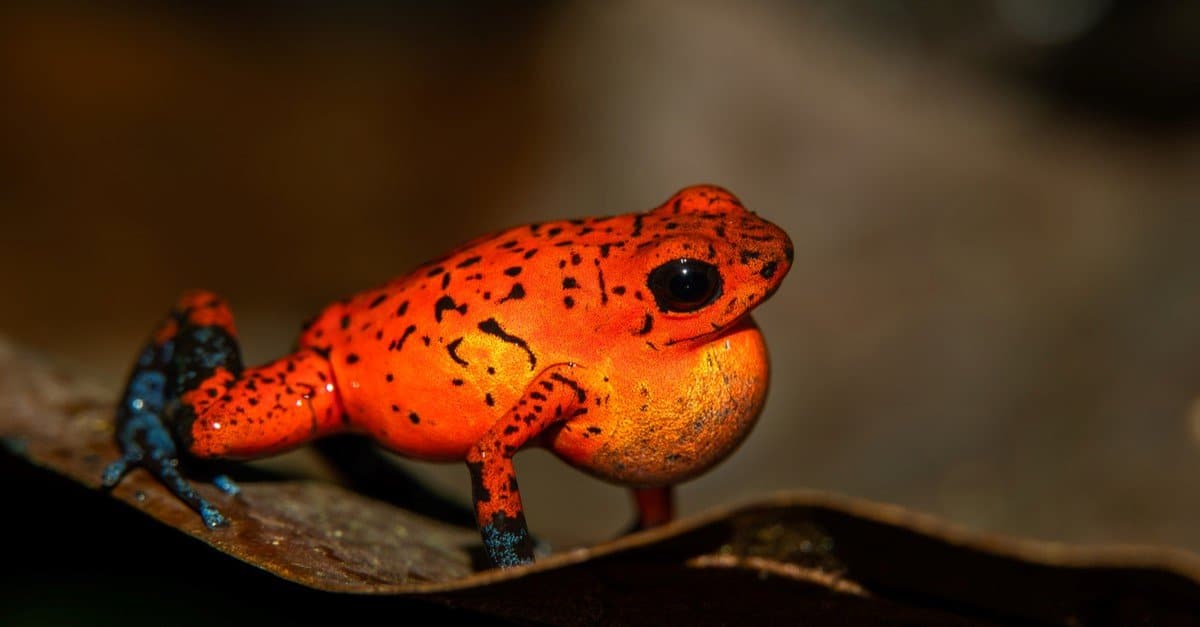The Vibrant World of Red Animals: Beauty and Survival
Red is a color that captures attention. In the natural world, it serves more than just an aesthetic purpose—it can be a warning, a signal, or even a tool for survival. From the depths of the ocean to the treetops of rainforests, red animals use their striking colors in fascinating ways. Here are 10 remarkable creatures that showcase the power of red.
10. Western Red Scorpionfish
The Western red scorpionfish (Scorpaena sumptuosa) is one of the most colorful marine animals found in coral reefs. Its mottled red scales help it blend into its surroundings, allowing it to lie in wait for prey at night. These fish are not fast swimmers, but they are skilled ambush predators. During the day, they hide in rock crevices to avoid larger predators like sharks and rays.
Their sharp spines are coated with venom, making them dangerous to any creature that tries to eat them. Interestingly, they closely resemble another reef predator, the scarlet frogfish, which also uses camouflage to catch unsuspecting prey.
9. Strawberry Poison Dart Frog
The strawberry poison dart frog (Oophaga pumilio) may be small—no more than an inch long—but it is one of the most toxic animals on the planet. Most populations have bright red skin with black spots, though some individuals display blue, green, or yellow hues. This vibrant coloration serves as a warning to potential predators.
These frogs secrete powerful toxins through their skin, which can cause convulsions, paralysis, and even death in those who come into contact with them. However, they are not lethal to humans through touch alone. Their color patterns also play a role in mating, as females often prefer males with similar markings.
8. Blood Red Glider
The blood-red glider (Cymothoe sangaris) is a striking butterfly found in Central Africa. Its upper wings are covered in bright blood-red coloration with black edges, while the underside is more subdued, appearing olive-gray or brown. Scientists have debated whether this species should be split into two based on differences in appearance and flower preferences.
This butterfly’s unique coloring helps it stand out in its environment, possibly serving as a warning to predators or a way to attract mates.
7. Betta Fish
Betta fish (Betta splendens) are known for their dazzling colors and flowing fins. Native to Southeast Asia, these freshwater fish have become popular pets worldwide. Males are particularly aggressive toward other males, flaring their gills and nipping at rivals.
In the wild, bettas only display their vivid colors when agitated. However, captive-bred bettas have been selectively bred to maintain their bright hues constantly. While many are red or orange, they come in a wide range of colors, including blue, white, and lavender.
6. Red Panda
The red panda (Ailurus fulgens) is a small, tree-dwelling mammal found in the Eastern Himalayas and parts of China. Its fur is a mix of red, orange, and white, with distinctive black markings around the eyes and legs. This fluffy creature spends most of its time climbing trees, feeding mainly on bamboo.
Despite its name, the red panda is not closely related to bears or giant pandas. It is the only member of its family, making it a unique and fascinating species.
5. Eurasian Red Squirrels
Eurasian red squirrels (Sciurus vulgaris) are among the most common mammals in Europe and Asia. They have a reddish coat with white underparts and black-tipped ears. Their fur color can vary from gray-brown to orange-red depending on location and season.
These squirrels are active year-round and store food for the winter. They are known for their agility and ability to leap between trees with ease.
4. Ladybug
Ladybugs, or ladybirds, are some of the most recognizable red insects. With over 6,000 species worldwide, they come in a variety of colors, including yellow, orange, and blue. The seven-spot ladybird (Coccinella septempunctata) and the nine-spotted ladybug (Coccinella novemnotata) are among the most common.
While not poisonous, ladybugs taste bad to predators. When threatened, they release a foul-smelling fluid from their leg joints, which can cause allergic reactions in humans. This defense mechanism helps protect them from being eaten.
3. Scarlet Ibis
The scarlet ibis (Eudocimus ruber) is a striking wading bird found in South America and the Caribbean. Its entire body is covered in vibrant scarlet plumage, except for its black wingtips. These birds use their long, curved bills to probe for food in soft mud.
Young scarlet ibises are born with dull gray feathers, which gradually turn red as they mature. They often travel in large flocks, which provides protection and improves foraging efficiency.
2. Northern Cardinal
The northern cardinal (Cardinalis cardinalis) is a beloved songbird found throughout North America. Males are easily recognized by their brilliant crimson plumage and black facial markings. Females, on the other hand, are more muted, with gray or brown feathers and hints of red.
These birds are commonly seen at bird feeders, especially those offering sunflower seeds. They are known for their beautiful songs and are often considered symbols of vitality and energy.
1. Scarlet Macaw
The scarlet macaw (Ara macao) is one of the largest parrots in the world, measuring up to 33 inches from beak to tail. Its striking red feathers are complemented by blue and yellow accents on the lower wings. These intelligent birds are native to the rainforests of Central and South America.
Scarlet macaws use their strong beaks to crack open nuts and seeds. They are also popular in the pet trade due to their intelligence and ability to mimic human speech. These birds typically mate for life and are known for their loud, vocal calls.







